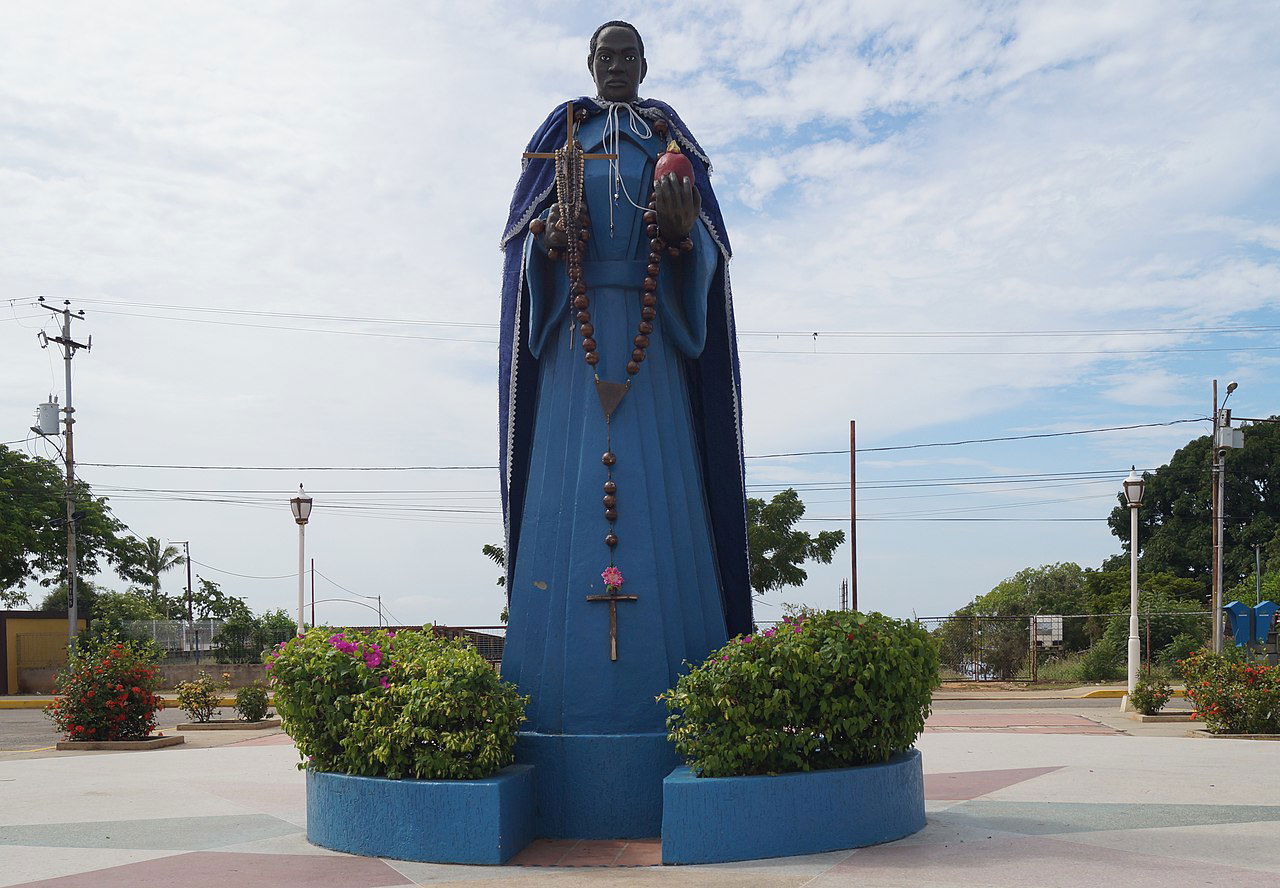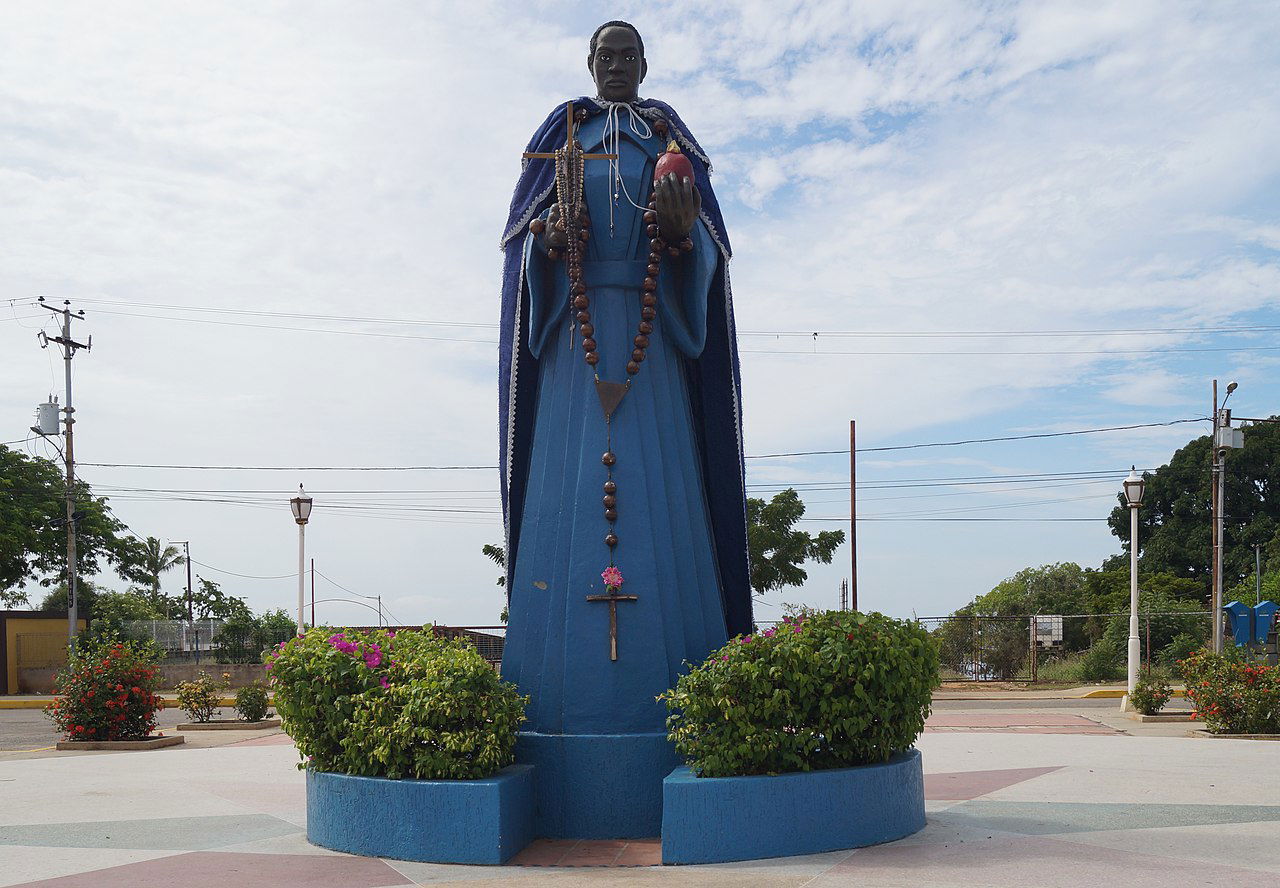SAINT BENEDICT OF PALERMO

Roman Martyrology: In Palermo, a city also in Sicily, St. Benedict Massarari, called "the Moor" because of the color of his skin, was first a hermit, and then entered the Order of Friars Minor. He was always humble in everything and full of faith in Divine Providence.
Date of canonization: May 24, 1807 by Pope Pius VII.
Saint Benedict is called of Palermo, for the city where he died, or Saint Fratello or Saint Philadelphus for the place where he was born, or also the Moor for the color of his skin and his African ancestry. As a young man he embraced the hermit life, but later joined the Franciscan Order. He had no studies, but his natural and spiritual gifts of counsel and prudence attracted many people. Although a lay brother, he was not only a cook, but also the guardian of his convent and master of novices.
St. Benedict of Palermo was born in 1526 in San Fratello, formerly called San Filadelfo, in the province of Messina (Sicily), to Christian parents, Christopher Manassari and Diana Larcari, descendants of slaves. As a teenager Benedict tended the patron's flock and from then on, because of his virtues, he was called the "Moorish saint".
At the age of twenty-one he entered a community of hermits, founded in his native region by Jerónimo Lanza, who lived under the Rule of St. Francis. When the hermits moved to Monte Pellegrino to live in greater solitude, Benedict followed them, and upon Lanza's death, was elected superior by his companions.
In 1562 Pius IV withdrew the approval that Julius II had given to that institute and invited the religious to enter an Order of their own choosing. Benedict chose the Order of Friars Minor, and entered the convent of St. Mary of Jesus in Palermo, founded by Blessed Matthew of Agrigento.
He was then sent to the convent of Santa Anna Giuliana, where he remained for only three years. Transferred again to Palermo, he lived there for twenty-four years. At the beginning he worked as a cook with a great spirit of sacrifice and supernatural charity. Many miracles were attributed to him. He was held in such esteem that in 1578, while he was not a priest, he was appointed superior of the convent. For three years he guided his community with wisdom, prudence and great charity. On the occasion of the Provincial Chapter he moved to Agrigento, where, because of the fame of his holiness, which had spread rapidly, he was welcomed with warm demonstrations by the people. Appointed master of novices, he attended to this delicate office of the formation of the young with such holiness that he was believed to have the gift of scrutinizing hearts. Eventually he returned to his primitive trade of cook.
A great number of devotees went to him to consult him, among whom also priests and theologians, and finally the Viceroy of Sicily. He had a wise and enlightening word for everyone, always encouraging them to do good. Humble and devout, he redoubled his penances, fasting and flagellating himself to the point of shedding blood. He performed numerous cures. When he left the convent, people surrounded him to kiss his hand, to touch his habit, to commend themselves to his prayers. A docile instrument of divine goodness, he did immense good for souls.
In 1589 he became gravely ill and by revelation he knew the day and hour of his death. He received the last sacraments, and on April 4, 1589, he died sweetly at the age of 63, pronouncing the words of the dying Jesus: "Into your hands, Lord, I commend my spirit". His cult spread widely and he became the protector of the Afro-American peoples.

